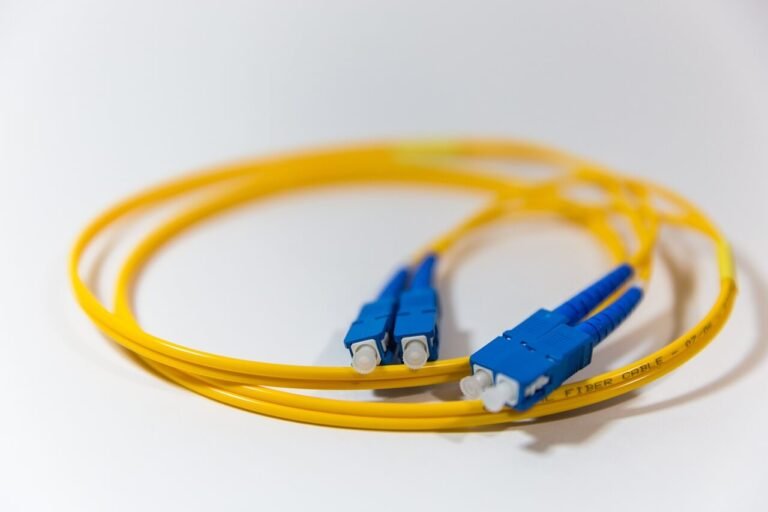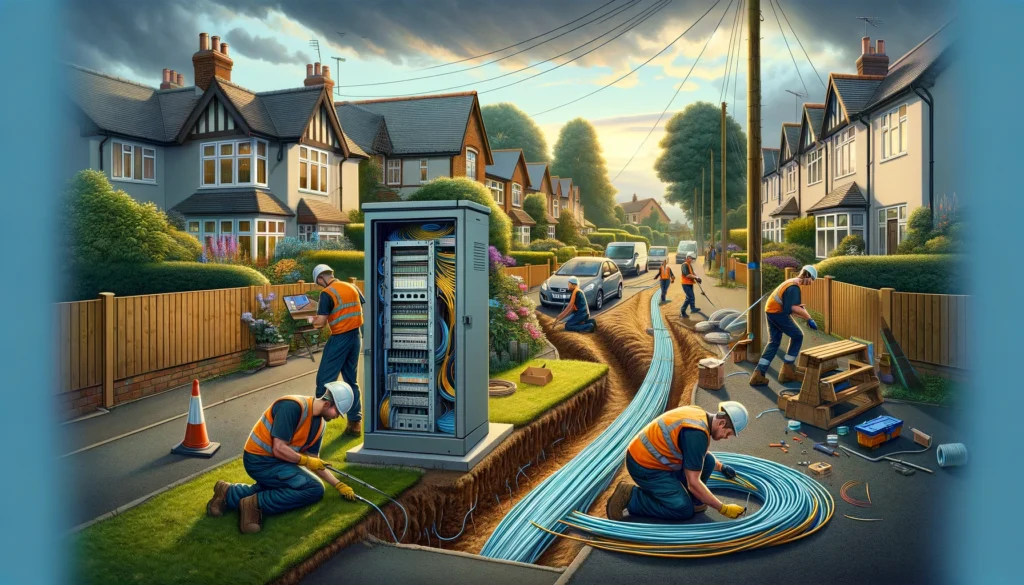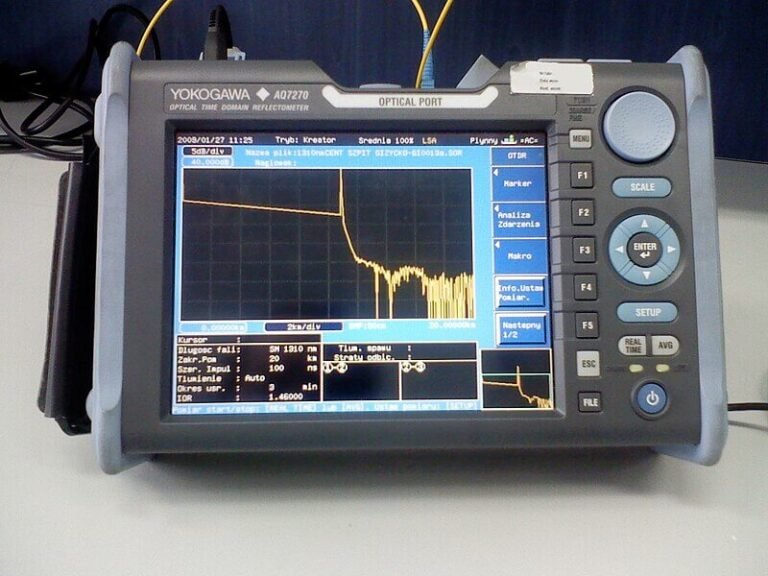Introduction
Starting a venture to deploy a fiber to the home (FTTH) network can be an exciting and challenging journey. As the demand for high-speed internet rises, the need for deploying FTTH networks becomes more pressing. However, the complexity of such deployments necessitates meticulous market analysis and adherence to regulatory compliance.
In this guide, we’ll meticulously dissect the critical factors that underpin a successful FTTH network rollout. From deciphering market dynamics to navigating regulatory frameworks and stakeholder engagement, we’ll guide you through every step of the process.
Market Analysis and Regulatory Complience
Understanding Your Market:
This is likely to be the first step before any FTTH rollout. We must understand if there is demand for higher speed broadband, how large the market is, how much potential customers are willing to pay, who the main competitors are and what kind of service they offer, the strengths and weaknesses of the competitors, population trends, the type of customers, and what they use the internet for. Once we have a better understanding of our market, it will be much easier to plan the architectures and the technical part of the network.
Navigating the Regulatory Landscape:
Next up, recognize the guidelines of the game. Understand the telecommunications regulations and compliance requirements in your goal vicinity. Knowing the lay of the land on the regulatory front is essential for a clean deployment, as it could really slow down the rollout and increase the cost for deployment. Early identification of regulatory constraints helps in strategizing the network build-out, especially in sensitive areas, ensuring a cost-effective and compliant rollout.

Evaluating current infrastructure:
Examine the current infrastructure closely. Analyze the state of existing telecommunications infrastructure and determine if anything can be repurposed or utilized further. These steps help to understand the basic implementation and potential upgrades required for FTTH implementation.
If you don’t have any existing infrastructure and it’s a greenfield investment, become aware of infrastructure leasing companies. This approach can significantly reduce the investment and cut the time-to-market.
Workforce Evaluation:
Assessing the available workforce and skills in the market is pivotal for the successful deployment of FTTH networks. FTTH rollouts are complex, have many moving parts, and at different moments of the rollout, you will need a workforce with different sets of skills.
Understanding the local talent pool and the number of individuals possessing these skills in the area is essential. Setting up efficient processes to leverage remote workers should be explored, optimizing resources and overcoming potential geographical constraints.
Additionally, gaining insights into employment regulations is vital, considering the varied expertise needed at different stages of the FTTH rollout. This comprehensive analysis ensures a strategic approach to human resources, facilitating a seamless and efficient deployment process.
Geospatial Net offers expertise on projects globally. When it comes to planning, design, documentation, and workflows, we can cover you in any place in the world. Book a free consultation with us to leverage our experience and ensure the success of your FTTH deployment.
Scalability:
Think big! Assess the scalability of your FTTH solutions. Ensure that whatever you set up can handle the growing demands of the community and the technology. Scalability is the key to future-proofing your network.

Anticipating Obstacles:
No project is without its hurdles. Recognize potential obstacles that might stand in the way of your FTTH deployment. Identifying challenges early on enables you to strategize solutions effectively.
Financial Planning

Initial Investment:
Numbers matter. Calculate the upfront costs involved in deploying FTTH networks. Knowing how much you need to get started is fundamental for effective financial planning. With accurate analysis and planning, the cost could be estimated accurately.
Operating Expenses:
It’s not just about the beginning; think long-term. Estimate ongoing expenses for network maintenance and management. Understanding operational costs is crucial for sustaining your FTTH network. If you are leasing the infrastructure, take care about the lease contracts and the long-term price, as often the infrastructure could get more inflated than the price of the offered services.
Revenue Streams:
Let’s talk money. Identify potential sources of revenue from your FTTH services. Are you going to sell internet, dark fiber, lease the network to someone else, wholesale the fiber to other ISP companies, is the focus more on the B2C or B2B, and etc.? Whether it’s subscriptions, partnerships, or other creative avenues, a clear revenue strategy is essential for project success. If you did a detailed market analysis, the predictions here should not be too difficult.
Stakeholder Engagement:
Don’t go at it alone. Engage with local communities and government bodies. Understand the needs of the people you’re serving and gain support. Collaboration is the key to a successful deployment, and often can help with the permits and lower the number of problems during the construction process. In the next post we will dissect some of the successful stories and business models.

Risk Analysis
Technological Risks:
Tech can be unpredictable. Evaluate risks related to technology, such as equipment failures, compatibility issues or even the potential regulation issues. Remember, not always the cheapest equipment on paper is the best choice, quite often there are many reasons behind the price.
Being prepared for potential hiccups ensures a smoother journey.
Financial Risks:
Money matters can be tricky. Identify potential financial challenges and uncertainties. Being aware of financial risks allows you to navigate the economic landscape more effectively. For example in the recent year and so, with the high inflation, and the inflated rates, the money got more expensive. Usually this part is tricky, going to conservative can kill some of the opportunities, but also going too optimistic can be detrimental in a situation of prolonged economic crisis.
Regulatory Risks:
Rules can change. Assess risks associated with changes in telecommunications regulations. Staying on top of regulatory shifts ensures your FTTH network remains compliant and resilient.
By systematically addressing these points, you’re equipped with the knowledge needed to make informed decisions for a successful and sustainable deployment of FTTH networks. Stay tuned as we unravel more insights into the world of fiber-optic wonders!
Network Planning and Design
Topology and Architecture:
Consider the layout of your network. Map out the topology and architecture, defining how different elements will connect. This crucial step sets the foundation for a well-structured and efficient FTTH network. Sometimes one design is difficult to serve large areas, but getting too many variations can confuse the teams and cause delays or discrepancies in the documentation. Understanding the different use cases, clustering and setting up predefined layouts and solutions in the most common situations can streamline the planning process. We can help you choose the best possible topology and architecture for your network, design the routes, prepare documentation that will serve your company in the most practical and efficient way, so book a free consultation with our team.
Design, Hub Locations, and Routes:
Carefully design your network, determining hub locations and optimal routes. This involves strategic placement of key components to ensure effective coverage and connectivity. Finding the hub locations on time will be crucial for designing the feeder routes, and maintaining the network redundancy.
Types of Networks:
Choose the right network type based on the local landscape – whether aerial, underground, combined, building from scratch, or leasing existing infrastructure. Each option comes with its own set of considerations and challenges. In most situations, it is a mix of all, which requires experienced planners that can provide the most cost effective solution in all aspects. Not always the cheapest on paper is cheapest when it comes to construction, complex solutions can lead to unnecessary expenses during the construction process especially if they require a special type of gear which is not common in the area.
Hardware Considerations
Cables:
Selecting the right cables is paramount. Consider the types and manufacturers that align with your network requirements, ensuring reliability and performance. Consider enough reserve on the lengths and on the capacity. Professional opinion from the splicing teams is really important, as different types of cables require different effort to prepare the cable for splicing, which can increase the cost during the construction process and during the maintenance. Choosing the right materials will significantly affect the time for connecting a new customer and the expenses around preparing teams which can make those connections.
Equipment capacity:
Size matters. Determine the appropriate dimensions for cables, splice closures, cabinets, ONTs, microtubes, and ducts based on the network’s scale and capacity. Same as the type of the cables, there are materials that are expensive looking from the unit perspective, or looking at the capacity, but much more difficult during the construction, so their installation can make them an even more expensive choice.

Splitter Types, Splitting Ratio, and PON Design:
Opt for suitable splitter types and determine the splitting ratio for efficient PON (Passive Optical Network) design. This influences network capacity and performance, but also will affect the future scalability of the network too. Locations of the splitters can significantly affect the time required for installation and the gear that is required for the teams that will install them. Moreover, their maintenance is also affected by their placement, so unrestricted access to every splitter location should be considered before building that network.
Fiber Connectivity and Splicing:
The first step here aligns with the workforce, finding a good and sufficient amount of teams is crucial for the deployment stage. Set up processes, workflows and quality control, so the documentation can flow between the office and the field, and vice versa.
Decide between preconnected splitters or fusion splicing for fiber connectivity. Each has its advantages, and the choice impacts network installation and maintenance.
Active Equipment and OLT:
Choose the right Optical Line Terminal (OLT) type and decide on the number of locations for active network elements. This is pivotal for the dynamic functioning of your FTTH network. Check the regulations for specific manufacturers, as even if there are some good products for lower price, they might not be allowed in the area.

Power Systems:
Ensure a reliable power supply for active locations. Consider backup systems to prevent service disruptions during power outages. Also a good monitoring system which can send notifications in case of some outage is crucial for providing quality services and becoming reliable and number one choice between the customers.
Testing and Quality Assurance
As we mentioned in the previous steps, it is crucial to have well defined procedures for testing and quality control of everything that will be designed, planned, deployed, documented.
Quality control of the documentation side:
FTTx networks involve extensive documentation, complex planning, and adherence to various design guidelines and regulations. It can be challenging to manage all these aspects while accommodating changes requested by construction departments. To ensure accuracy and thorough coverage, implementing Quality Control (QC) procedures is crucial:
- Survey Side QC: automated and manual QC checks on survey data (data validation techniques, well designed forms/applications, scripts that will run checks and produce detailed reports on anything that is not looking right, manual quality control by survey supervisors or office personnel)
- Documentation Side QC: Develop automated and manual QC checklists for each step, including specific lists for the High-Level Design (HLD), Mid-Level Design (MLD), Low-Level Design (LLD), and As-Builts.
- Pre-Import QC Checks: conduct automated and manual checks before importing data into the Network Inventory system.
Implementing these QC procedures will streamline the documentation process, improve data accuracy, and facilitate efficient network management for your company. If you need experience on the best practices, setting up detailed QC lists, automation on the QC, our team can help you.
Pre-Activation and Post-Changes Fiber Splicing Tests:
Ensure that testing and quality assurance are prioritized before network activation and after any changes or upgrades. This approach guarantees optimal performance and user satisfaction, as signal quality heavily depends on the network’s construction. Even with the most expensive equipment, inadequate construction quality will hinder proper performance. Carrying out end-face inspections to spot contamination or flaws, executing OTDR tests to check the integrity of splices, and utilizing optical power meters to measure signal loss are crucial steps.
Procedures and Best Practices
Establish clear procedures for ongoing network maintenance. Address health and safety concerns, engineering difficulties, and best practices for routine upkeep.
Network Documentation:
Drawings, Spatial Data, BOM, BOQ, Splicing Plans, Schedules, and Reports:
Document every aspect of your network, from initial planning and Bill of Materials (BOM) to splicing plans, schedules, and comprehensive reports. Plan the format of the documentation so it is usable by the rest of the systems and easily imported into the Network and Asset Management systems. Well-structured data can provide an excellent foundation for setting up automatic reports, automating material ordering, tracking required quantities in stock, monitoring budgets, etc.
Procedures and Scripts for Synchronization:
Develop procedures and scripts for seamless synchronization between systems, ensuring accurate and up-to-date information. Discrepancies into the data can cause delays in the construction, maintenance, and could be detrimental in situations of big outages when every second matters.
Up to Date As-Built Documentation and Network Inventory Systems:
Regularly update As-Built documentation and keep the network inventory systems current. This ensures that your records accurately reflect the physical network configuration, and as I mentioned, could save a lot of time and money when every second matters.
Automation of Reporting:
Streamline reporting for various departments through automation. Provide real-time information for sales, marketing, management, warehousing and decision-makers.
Synchronization with BSS and OSS Systems:
Integrate your FTTH network seamlessly with Business Support Systems (BSS) and Operations Support Systems (OSS). This synchronization enhances overall efficiency and management and heavily depends on the documentation produced during the planning, construction and activation process.
Conclusion
Navigating the technical intricacies of FTTH network planning and implementation requires a holistic approach. By delving into these considerations, you pave the way for a robust, efficient, and future-proof fiber-optic network that seamlessly connects communities. Our team excels in planning of FTTx networks, documentation, data management and reporting. If you require any consultation in this area, please feel free to reach out to us. We are always happy to assist.
Keep an eye out for further updates as we delve deeper into the realm of Fiber to the Home (FTTH).


